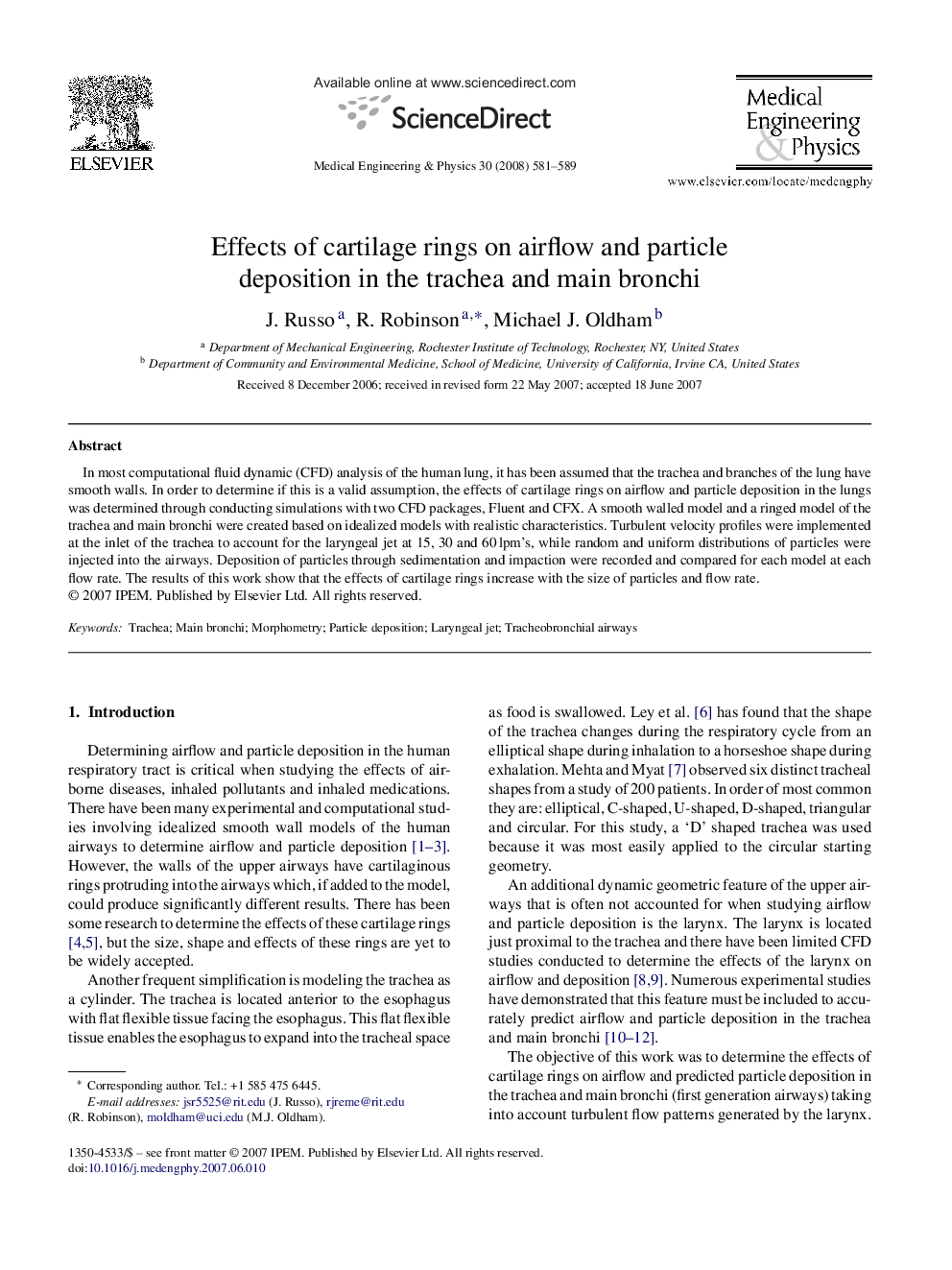| Article ID | Journal | Published Year | Pages | File Type |
|---|---|---|---|---|
| 876930 | Medical Engineering & Physics | 2008 | 9 Pages |
In most computational fluid dynamic (CFD) analysis of the human lung, it has been assumed that the trachea and branches of the lung have smooth walls. In order to determine if this is a valid assumption, the effects of cartilage rings on airflow and particle deposition in the lungs was determined through conducting simulations with two CFD packages, Fluent and CFX. A smooth walled model and a ringed model of the trachea and main bronchi were created based on idealized models with realistic characteristics. Turbulent velocity profiles were implemented at the inlet of the trachea to account for the laryngeal jet at 15, 30 and 60 lpm's, while random and uniform distributions of particles were injected into the airways. Deposition of particles through sedimentation and impaction were recorded and compared for each model at each flow rate. The results of this work show that the effects of cartilage rings increase with the size of particles and flow rate.
